FutuRaM involves 28 partners (associations, companies, universities) and over 100 experts from different scientific and technical fields covering six waste streams: batteries, electrical and electronic equipment, vehicles, mining; slags and ashes, and construction and demolition. Our researchers often engage in passionate conversations across their fields and most importantly about the relevance of this project. Their enthusiasm is fascinating and to be shared with the world. Meet the researchers behind FutuRaM!
Please introduce yourself both personally and professionally in a few sentences. We’d like to know a bit more about your day-to-day job, where do you live, what did you study.
Hi all, my name is Nathalie Korf. I am a research assistant at TU Berlin in Germany. I studied waste management and treatment of contaminated sites as well as hydrology at TU Dresden and now I work in the field of circular economy, recycling, and data analysis. During my time at TU Berlin, I have been involved in teaching and research, focusing on product, waste, and material characterisation, as well as the assurance of the data quality of these characterisation methods.
When I am not at the office, you can find me in an orchestra playing the bassclarinet and clarinet or hiking, knitting, cooking, and reading the occasional book.
How did you end up studying and working in this field?
After finishing high school, I never intended to study or work in the field of waste management or even circular economy. It was more of a multi-step detour that brought me here. The first time I participated in a waste sorting analysis in a practical lab course at university (rummaging through food waste, diapers, dead pets, and everything else you may find in municipal solid waste), I knew that I chose the right path of becoming a waste management engineer.
On the other hand, if you ask my parents, they will tell you about a little girl in the 80’s who upon coming home from kindergarten, started educating them about the proper ways of separate waste collection.
Luckily enough, I was pulled into the world of recycling and circular economy when I started working at TU Berlin. The topics and context of material characterisation and measuring have been my focus points since the second half of my student career.
How would you explain your favourite research project (even if unrelated to FutuRaM) to somebody outside the scientific community? Why did it capture your attention?
Actually, my favourite research project is indeed FutuRaM, because it combines my research interests with crucial societal and political challenges and goals we face in the next decades. The assessment and facilitation of the availability and recoverability of secondary raw materials are key strategic issues for a functioning circular economy as well as fair and just living and working conditions, in the EU and globally. From a closer professional perspective, I find the combination of so many different information and data highly interesting to create new knowledge.
How would you capture the essence of TU Berlin and how does your expertise and research at the university relate to FutuRaM?
In FutuRaM, the specific consortium partner within TU Berlin is our Chair of Circular Economy and Recycling Technology within the Institute for Environmental Technology. Our main focus in research and teaching is to identify, quantify, and characterise fate and behaviour of solid resources and raw materials in society and the environment in a product-centric manner as well as the development and optimisation of recycling technologies at the aggregate, plant, and system level. With this expertise, we lead the work package on the composition of secondary raw materials.
What do you find the most intriguing about this project and why?
For me, the most interesting part of the project is the composition of products, waste, and secondary raw materials and how the composition changes with influencing factors such as product innovation cycles, legal restrictions, and consumer behaviour (who would have thought twenty years ago that nowadays we simply cannot live without at least one smartphone?!). And consequently, how can we recover the incredibly broad range of elements and materials in the products we use on a daily basis. There are so many influencing factors on this seemingly simple data and information – I have been asked countless times by friends, why we do what we do and why this data is not readily available.
Consequently, the goal for my research within the project is to develop and facilitate innovative approaches to collect and combine composition data to enable a strategic and true circular economy, in a harmonised but also transferable way.
How would you simplify and explain the goal of FutuRaM to a passerby who has never heard of EU funded projects and CRMs (Critical Raw Materials)?
Resources are finite and many if not most resources are not renewable. To meet the demand for raw materials, we need to increase and improve recycling activities, because primary raw materials alone are not sufficient to make all the products we use and rely on in our daily lives. To be able to strategically recover raw materials from waste, we need to know how much of which waste we produce now, and in the next decades.
